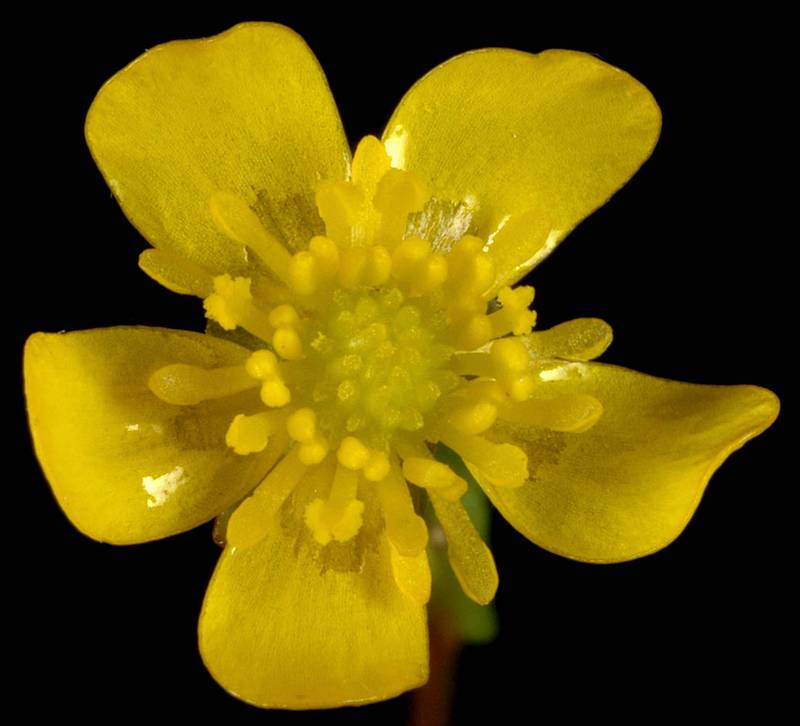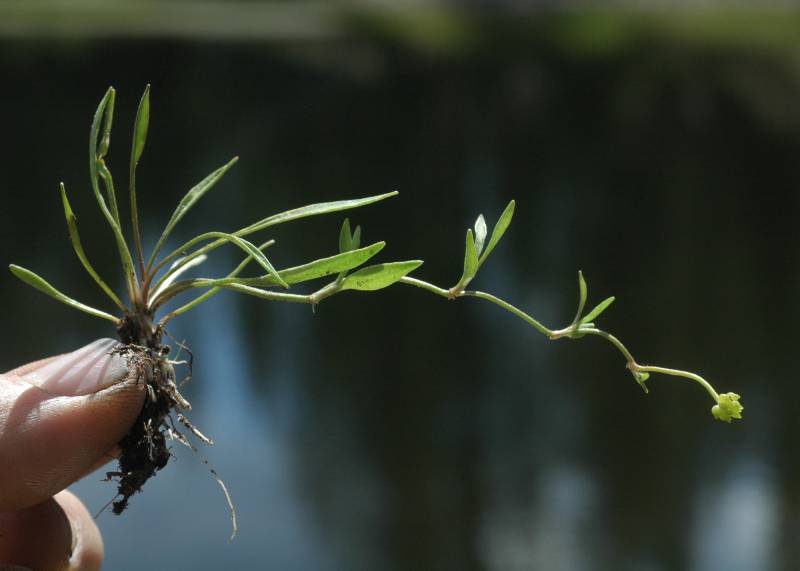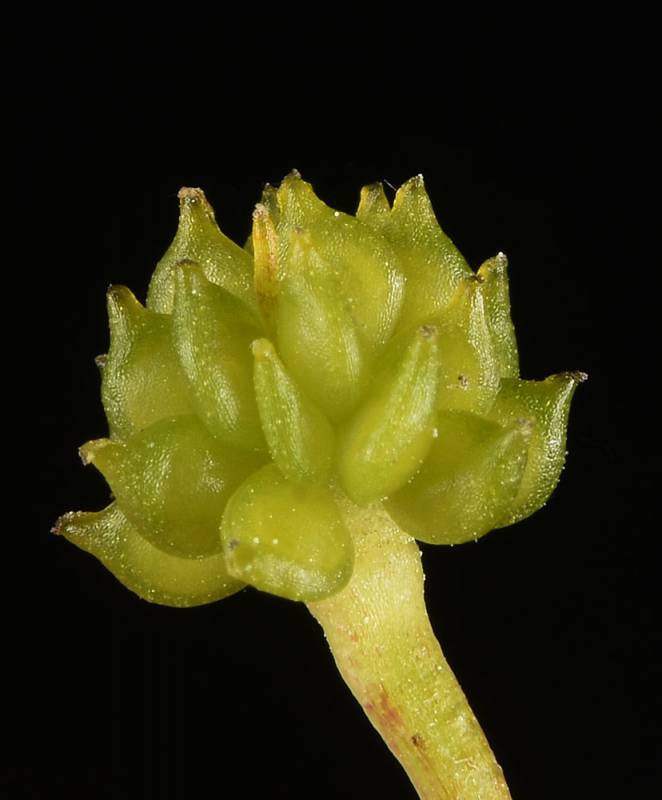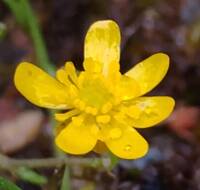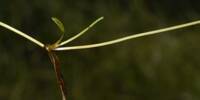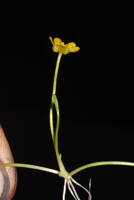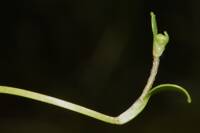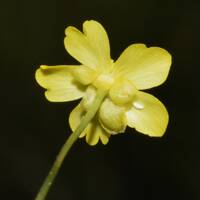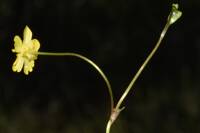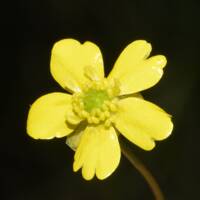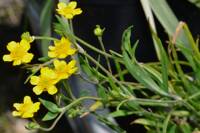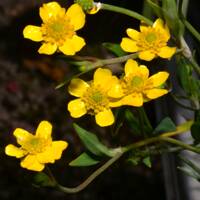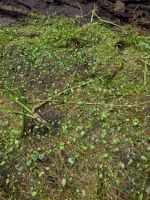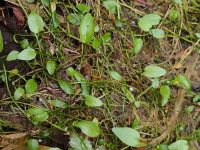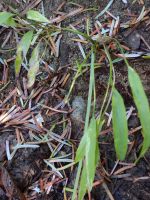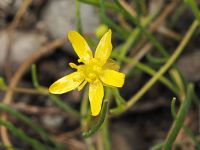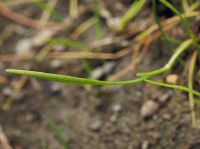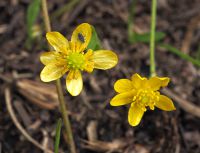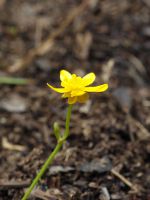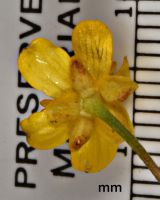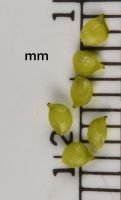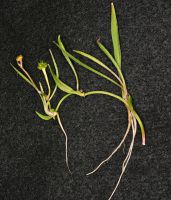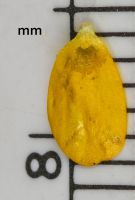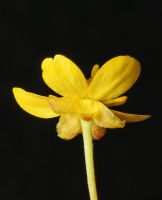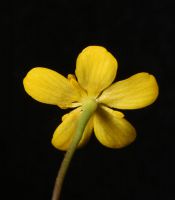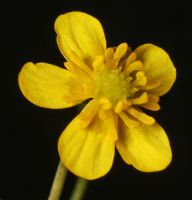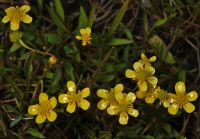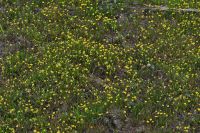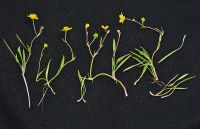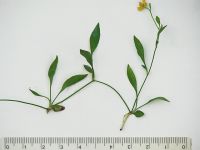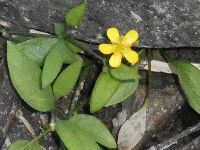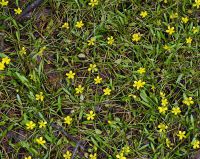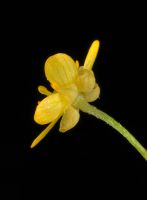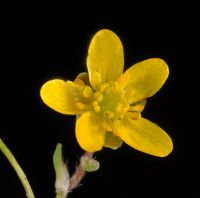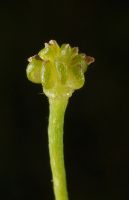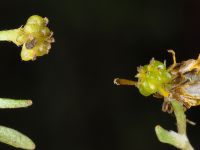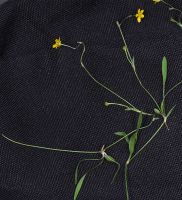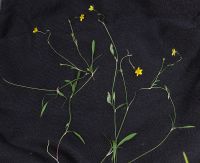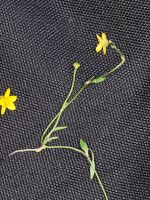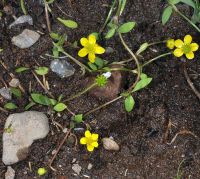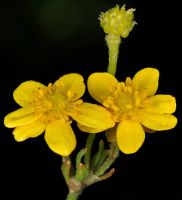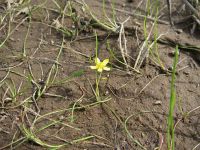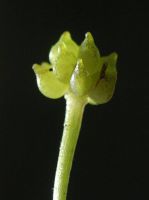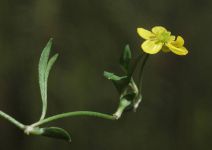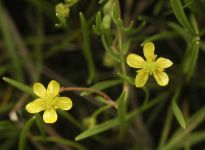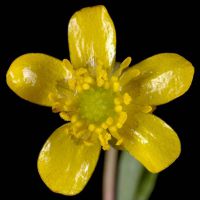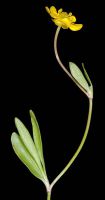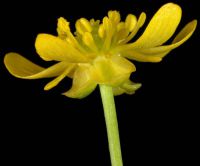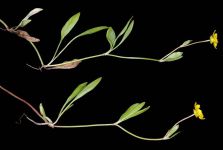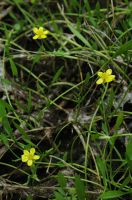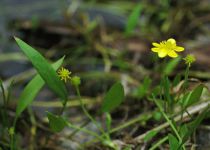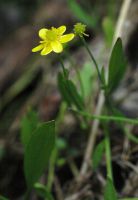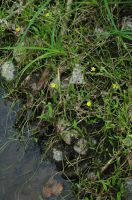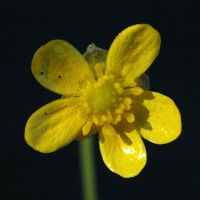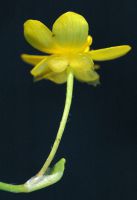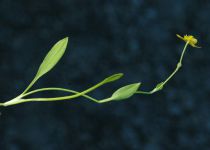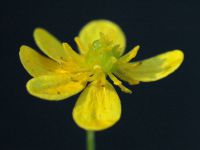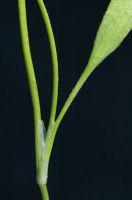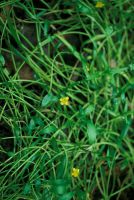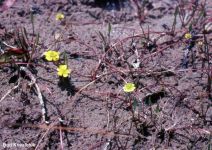Distribution: Widely distributed on both sides of the Cascades crest in Washington; Alaska to California, east across most of North America to the Atlantic Coast.
Habitat: Mostly in mud, often where brackish, from sea level to mid-elevations in the mountains.
Flowers: May-July
Origin: Native
Growth Duration: Perennial
Conservation Status: Not of concern
Pollination: Bees, flies, butterflies, beetles
Low perennial from slender roots, the stem nearly prostrate, simple or sparingly branched, rooting at the nodes, up to 5 dm. long.
Leaves simple, entire, the blades from broadly oblanceolate to narrowly linear, the basal ones long-petiolate, the cauline leaves nearly sessile.
Flowers usually solitary on pedicels up to 10 cm. long; sepals 5, 2-5 mm. long, with appressed hairs; petals usually 5, yellow, 4-5 mm. long; nectary scale broader than long, forming a shallow pocket; receptacle ovoid, glabrous; stamens many; pistils 5-25.
Achenes in globose to hemispheric heads 2-4 × 3-4 mm; achenes glabrous 1.2-1.6 × 1-1.4 mm with straight or curved beaks 0.1-0.6 mm in length.
Publication: Sp. Pl. 1: 548. 1753.
-
var. flammula – creeping spearwort
 Occurring on both sides of the Cascades crest in Washington; British Columbia to California, east to Idaho; also in eastern North America and Eurasia.
Occurring on both sides of the Cascades crest in Washington; British Columbia to California, east to Idaho; also in eastern North America and Eurasia. -
var. ovalis – creeping spearwort
 Occurring on both sides of the Cascades crest in Washington; southern Alaska to California and New Mexico, east across southern Canada and northern U.S. to the Atlantic Coast.
Occurring on both sides of the Cascades crest in Washington; southern Alaska to California and New Mexico, east across southern Canada and northern U.S. to the Atlantic Coast. -
var. reptans – creeping spearwort
 Occurring on both sides of the Cascades crest in Washington; Alaska to northern Washington, east to Idaho and Wyoming, and further east to the Atlantic Coast; also in Eurasia.
Occurring on both sides of the Cascades crest in Washington; Alaska to northern Washington, east to Idaho and Wyoming, and further east to the Atlantic Coast; also in Eurasia.
PNW Herbaria: Specimen records of Ranunculus flammula in the Consortium of Pacific Northwest Herbaria database
WA Flora Checklist: Ranunculus flammula checklist entry
OregonFlora: Ranunculus flammula information
E-Flora BC: Ranunculus flammula atlas page
CalPhotos: Ranunculus flammula photos

